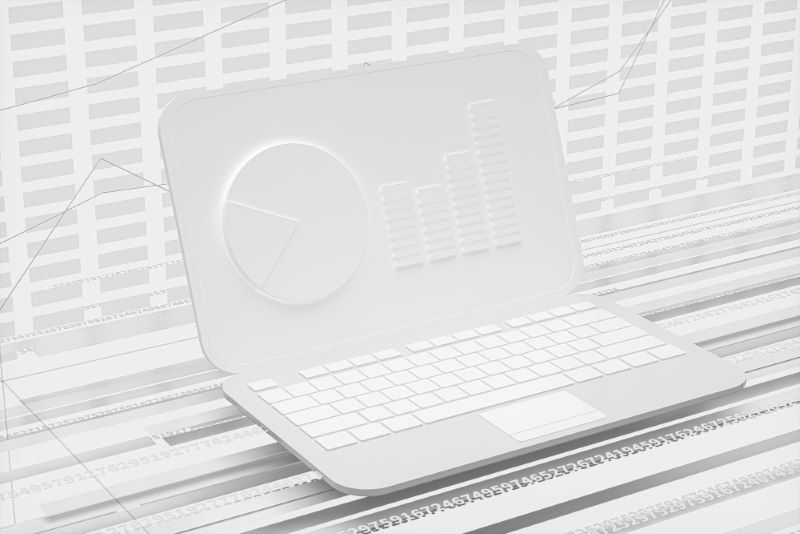How To Use Scraping API As Anti-Counterfeiting Technology
Performing an anti-counterfeiting scrape can be a lofty process. With roughly 7.9 million online retailers across the globe, searching them all — manually or via a bot — is a tedious, almost impossible process. Conducting such a search often enough to catch a new counterfeit operation before it sinks its teeth into your market and jeopardizes business can be even tougher.
Table of Contents
Nowadays, counterfeiting is just as prevalent online as it ever was in brick-and-mortar stores. Technologically, this criminal practice has had to get much slier, using advanced software to hide in plain sight, scamming companies and customers alike. Selling cheap replicas on an e-commerce site, for example, doesn’t just hurt a brand’s reputation and sales but also dupes customers who don’t realize they’re being misled.
Any online retailer needs to have anti-counterfeiting technology in place to catch these bad online actors. Here’s a closer look at how scraping API can do just that.
What Is Anti-Counterfeiting Technology

Anti-counterfeiting technology aims to protect, identify, and track intellectual property online through various methods of embedding and identifying information found in digital files, devices, and computers. Several anti-counterfeiting technology companies offer tools that can help your business determine if fraudulent versions of products are selling in the online marketplace. You can also use their anti-counterfeiting measures to prevent your items from being replicated and sold without permission.
Two conventional anti-counterfeiting measures obtainable on today’s market are:
- Proxy monitoring software
- Scraping API software
Of the two, proxy monitoring is the most prevalent and the most difficult. Scraping API is a simple version that is easy to work with and highly cost-effective.
Difficulties Surrounding Anti-Counterfeit Tracing

Tracing a counterfeit operation can be a time-consuming, costly effort that poses several challenges, especially if these criminal operations are taking place in far-flung regions of the world. There’s a good chance you’ll get locked out of viewing information and e-commerce stores simply because of the geographical location linked to your IP address.
Many American companies, for instance, are geo-restricted from seeing offers presented by companies based in China, where counterfeiters are rampant. The country has become one of the hottest marketplaces for knock-offs. You’d never know it if you’re using a U.S.-based IP address because China will block your access to many of its online retailers.
If your IP address keeps getting blocked when you’re using scraping software or a proxy to launch an anti-counterfeiting investigation, these five critical measures can help free it:
- Slow down your scrapping process. Use your anti-counterfeiting scraper only during non-peak internet hours.
- Try using a proxy server. If you aren’t already doing this, you should consider it.
- Set up different user agents and switch between them for scrapes. Alternating this way will make your efforts less detectable.
- Program the scraping bots to use different scraping patterns to throw off anti-bot software. This will also help make your anti-counterfeiting scrape less obvious.
- Avoid scraping for image and JavaScript applications. This is something you really should do if you’re having difficulty getting past IP address barricades.
If you don’t have time to work through these steps to stop your IP blocking issues, several anti-counterfeiting technology companies are experienced at creating bots to help you out. Scraping Robot, for example, can build custom scraping models for all your business needs. The company also updates its user-friendly scraping software frequently to keep up with changing trends.
3 Main Areas To Scrape for Counterfeits

There are three main areas you need to check when performing a comprehensive anti-counterfeiting scrape. Here’s a closer look at each one.
1. Scrape search engines with anti-counterfeiting technology
Scraping a search engine for a counterfeit item is much more effective than just scraping individual e-commerce sites because it allows you to conduct a more exhaustive search. Unfortunately, search engines come with their difficulties when it comes to performing scrapes, such as anti-botting software. This software can lead to a variety of problems for you and your bots:
- CAPTCHAs popping up to block bots
- Being banned from the search engine
Proxies help you perform web scraping undetected and prevent the backlash from scraping search engines.
Scraping a search engine isn’t all bad. You can gain a large amount of vital information about counterfeits by looking up the brand name, specific item details, and model numbers. Once you’ve got this information, you have the power to initiate a DMCA takedown.
2. Social media scraping
Counterfeiters often cheat the system by directly marketing fraudulent products on social media platforms that are popular among consumers. With billions of active social media users spanning the globe, this market is ripe for the picking. The fact that many social media companies encourage e-commerce to take place directly on their platforms doesn’t help.
If counterfeiters are selling knock-offs of your products are being sold on social media, it may force you to redirect any money you’ve invested in building your online presence toward stopping this activity. Because your customers believe your social media profiles and pages are legitimate, counterfeiters target them here the most, deceiving them with deals on fake product offerings. When these customers receive products that are inferior to the quality of your brand, they may just assume that your brand is lacking rather than immediately realize that the item they bought is counterfeit.
While social media sites have anti-botting software that can turn away scraping bots, it’s imperative to try to scrape these platforms to keep the integrity of your company intact. Social media can be fickle with bots, but be aware that you can quickly get banned for:
- Subnets
- Bot activity
- Some proxy activity
- IP addresses that originate from data centers
3. Online retailers
Oftentimes, counterfeit products turn up on e-commerce sites owned by online retailers. Fortunately, scraping for this type of activity is the easiest method of the three we’re discussing. That’s because most online retailers lump products into categories. By scraping the categories that your products fall under, your searches will be more targeted and efficient.
Online retailers are big on blocking activity that they deem suspicious, including subnets, odd IP addresses, and even blatantly apparent bots. With Scraping Robot, for example, you can quickly get around all of these hurdles, with constant software updates that stay ahead of anti-botting technology to give you the most accurate data.
Scraping API To Ward Off Counterfeiters

A scraping API is the most efficient way to gain quick, ready-to-use data in real time that your business can use. While proxies are great aids, they’re complex, take time and money to set up, and aren’t for every company.
Scraper API software generates information that’s organized and specific to the needs of the company, including:
- Websites
- Search engines
- eCommerce sites
- Social media
- Keywords and categories
With Scraping Robot API, for instance, you can protect your business at an affordable price. Offering the first 5,000 scrapes for free, Scraping Robot API has helped travel conglomerates, software as a service (SaaS) businesses, search engines, eCommerce sellers, government agencies, and many more highly-respected companies worldwide reduce the risk that counterfeiters pose. The software isn’t hindered by geographical location IP address blocks because it can scan anywhere around the globe, handling proxy and server management, browser scalability, and CAPTCHA solving for you so you never have to worry about data collection again.
Why Choose Scraping Robot for Anti-Counterfeit Scraping

Every company can benefit from anti-counterfeiting technology like Scraping Robot API but many don’t know that these types of tools exist. Or, if they are aware of scraping API, they can’t afford the development time and proxies it would take to create an in-house scraping solution. So, thousands of businesses are falling behind just because scraping seems too technical or scary.
When you choose Scraping Robot to handle your anti-counterfeit scraping needs, you can conduct your searches with the confidence that you have protected your business from potential online bans. You can also feel confident that you are getting the most accurate data in real time, harnessing the power of Scraping Robot API software to dig through the web for you.
With a few clicks, you can get started with this software, so you don’t have to worry about any extensive setup if you are concerned about a counterfeit operation that may already be in the works. You can get your data in as little as 60 seconds and begin analyzing it — it’s as easy as that. If you’re looking for a simple solution and don’t have too much technical expertise with scraping or proxies or anti-botting protections on sites you need to search, Scraping Robot API can help.
Do-it-yourself guide to Scraping Robot
Test the Scraping Robot API for yourself and run the first scrape for free by following these five simple steps:
- Copy a website link you think may contain counterfeit products.
- Open up Scraping Robot API.
- Paste the link from the website into the box.
- Press run and generate results in as little as 60 seconds.
- Download the HTML of your results to a database and look through them for counterfeits.
Scraping Robot is the best anti-counterfeiting technology to collect essential data. Try it out today.
The information contained within this article, including information posted by official staff, guest-submitted material, message board postings, or other third-party material is presented solely for the purposes of education and furtherance of the knowledge of the reader. All trademarks used in this publication are hereby acknowledged as the property of their respective owners.
